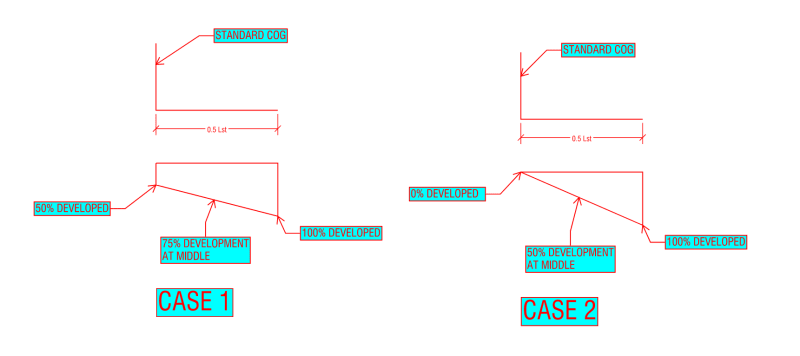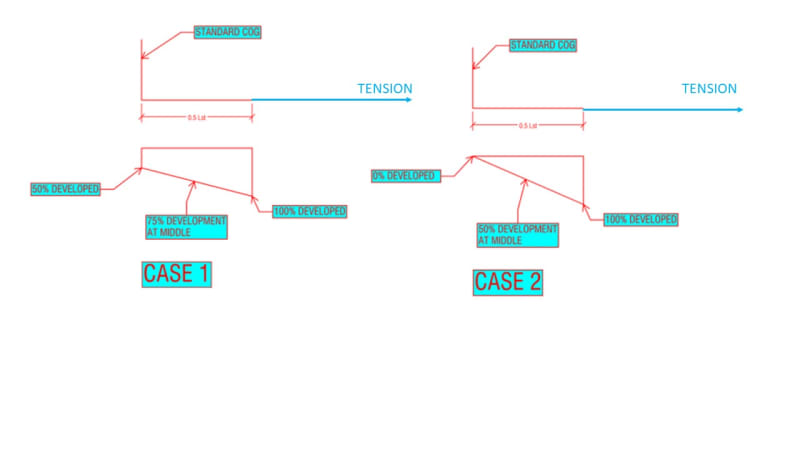Legoman92
Structural
- Nov 9, 2021
- 28
Hi guys,
Just had a bit of a discussion at work regarding how developed (in terms of strength) a cogged bar is at 0.5Lst past the back of the cog.
My understanding has always been that if you have a standard cog to AS3600 and provide a straight length in the other direction of 0.5 x Lst then you have a fully developed bar at that location. (as long as you have a transverse bar enclosed at the bend if the stress is above 400MPa).
For example lets say you have a N20 Vertical bar (for a pedestal) cogged into a slab. The development length of a N20 Vertical bar (50 cover, f'c = 32 MPa, fy = 500 MPa) Lst = 830 mm
For argument's sake, 0.5 Lst = 0.5 x 830 = 415 mm. Therefore say allowance of 50 (cover) + 20 (bar direction 1) + 20 (bar direction 2) = minimum slab thickness of 505mm to develop the full strength of the bar (as long as a transverse bar runs through the bend).
I've attached the commentary to this post which from my understanding (correct me if I'm wrong) says the cog itself provides 50% of the capacity and then the straight section provides the other 50%.
Therefore, my understanding is if I provide say only 300mm of a straight section (in lieu of 415), it is conservative to say the the capacity of the bar = 300/415 x 500 MPa = 72% ?
Thanks
Just had a bit of a discussion at work regarding how developed (in terms of strength) a cogged bar is at 0.5Lst past the back of the cog.
My understanding has always been that if you have a standard cog to AS3600 and provide a straight length in the other direction of 0.5 x Lst then you have a fully developed bar at that location. (as long as you have a transverse bar enclosed at the bend if the stress is above 400MPa).
For example lets say you have a N20 Vertical bar (for a pedestal) cogged into a slab. The development length of a N20 Vertical bar (50 cover, f'c = 32 MPa, fy = 500 MPa) Lst = 830 mm
For argument's sake, 0.5 Lst = 0.5 x 830 = 415 mm. Therefore say allowance of 50 (cover) + 20 (bar direction 1) + 20 (bar direction 2) = minimum slab thickness of 505mm to develop the full strength of the bar (as long as a transverse bar runs through the bend).
I've attached the commentary to this post which from my understanding (correct me if I'm wrong) says the cog itself provides 50% of the capacity and then the straight section provides the other 50%.
Therefore, my understanding is if I provide say only 300mm of a straight section (in lieu of 415), it is conservative to say the the capacity of the bar = 300/415 x 500 MPa = 72% ?
Thanks


